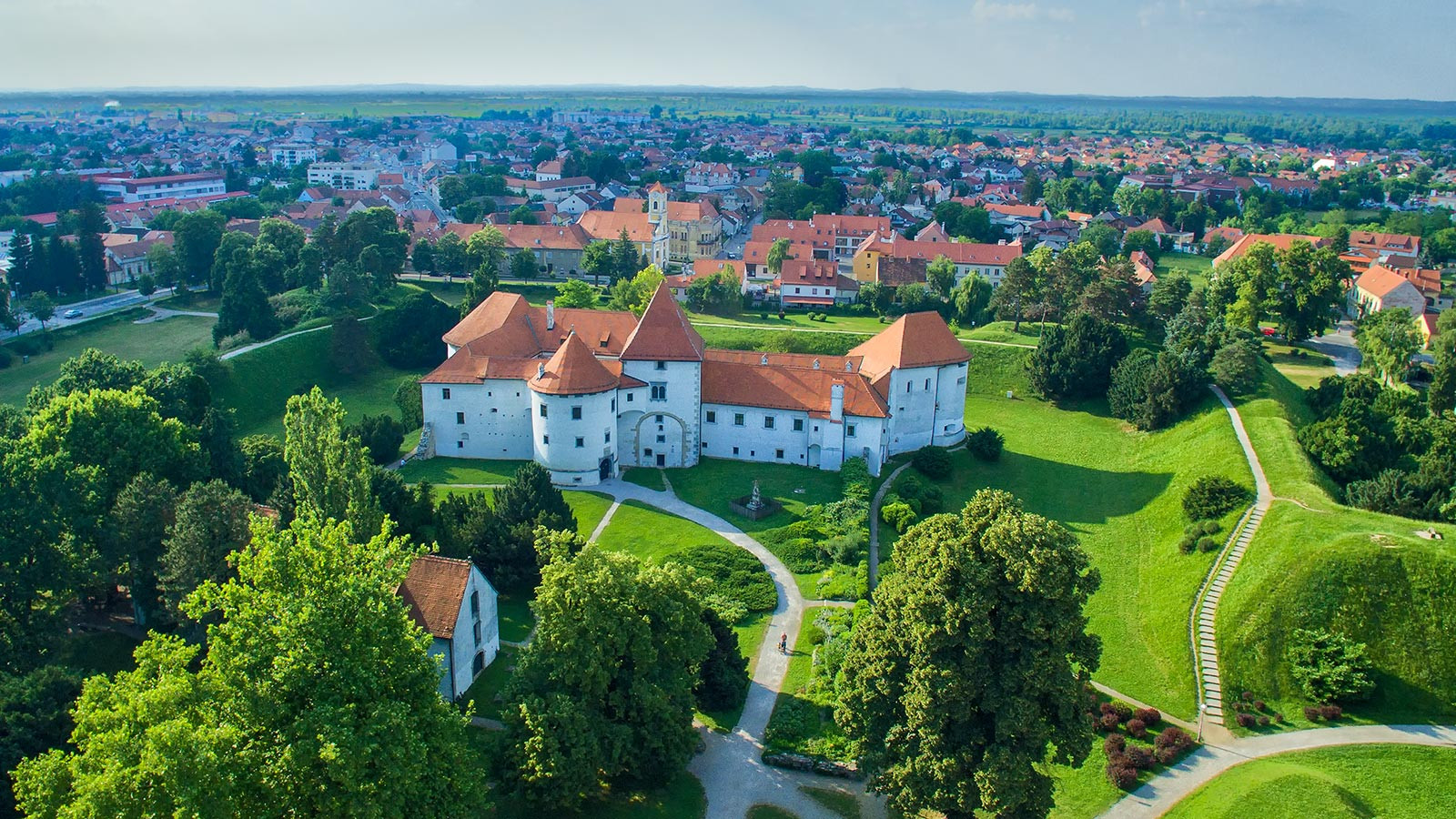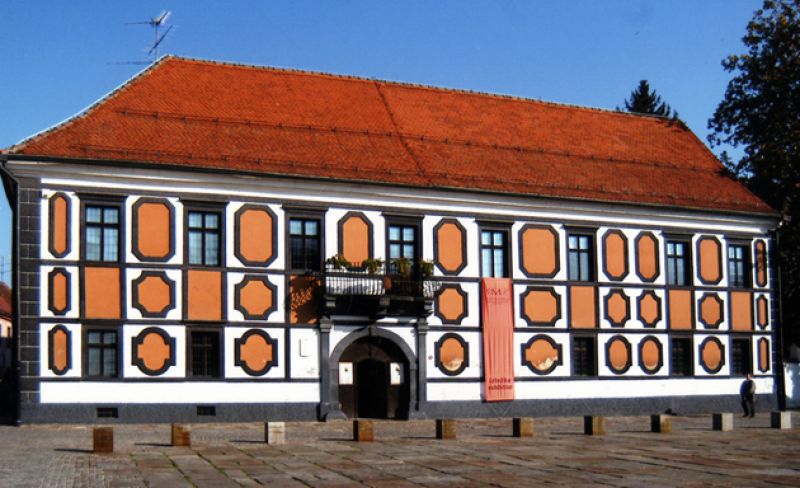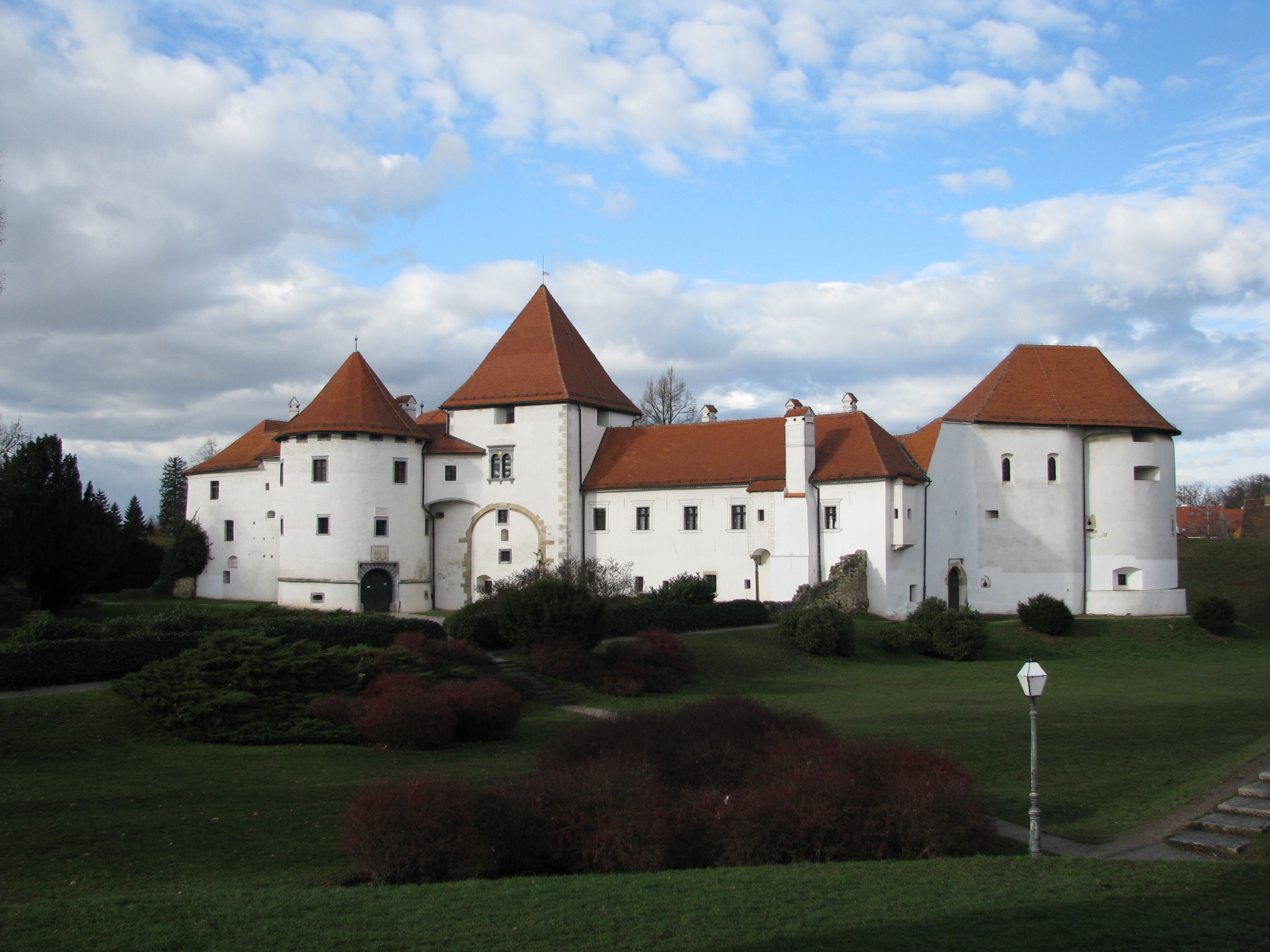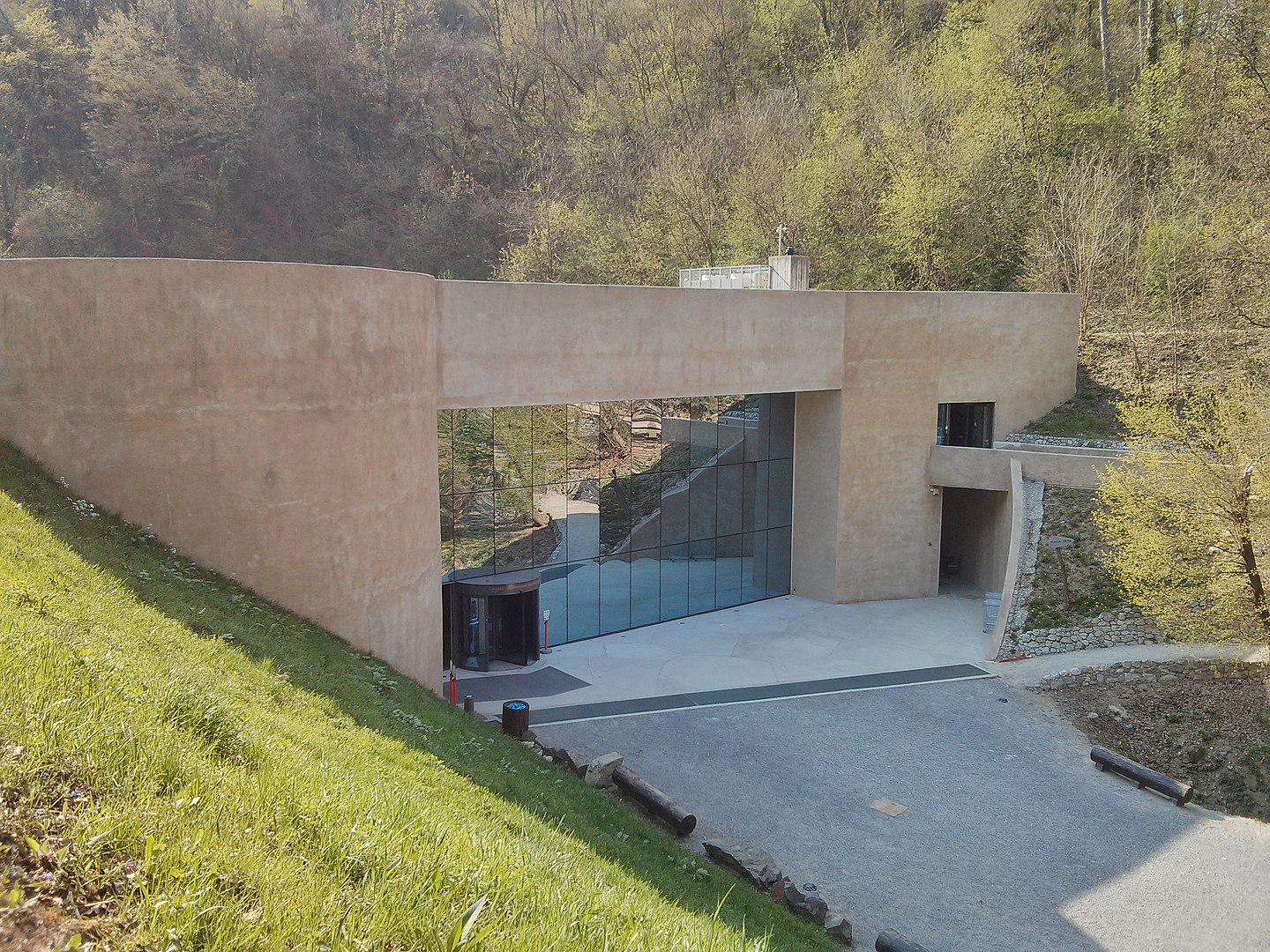Iron Age Danube Route Magazine: The First Issue Available For Free Reading
September 24, 2021 - The Iron Age Danube Route Magazine which was recently presented is now available online for free reading to better present the first cultural route in Croatia acknowledged by the European Council.
With the Iron Age Danube Route getting recognition as a cultural route by the European Council earlier in 2021, the Iron Age Danube Route Association continues to promote this valuable, educational, scientific, and tourist site in eastern Croatia.
As Zagreb's Archaeological Museum website informed its visitors, the first issue of the Iron Age Danube Route Magazine (written in English) has recently been presented, and you can download and read it as a PDF file.
The magazine's intention is to present the Iron Age Danube Route.
''We start with the basics by briefly explaining what the Iron Age was and then we go on to explain the route itself. After that, we invite you to follow the route by meeting the institutions and people behind the entire endeavor. Then you can check out our activities during this year (one little tip: it works even better if you check out the fresh information on our website),'' says the Archaeological Museum on its website.
The topics that will present how things were along the Danube back during the Iron Age include prehistoric landscapes, customs, and even gastronomy.
''The Iron Age Danube Route magazine — and indeed the route itself — not only wishes to demonstrate that the Danube of the Iron Age had an extremely interesting past but also seeks to ensure that it also has a future — a future you're all invited to share. Join us as readers or join us as tourists, if you wish. And who knows, one day, you might even think of joining us as partners. But whatever role you do reserve for yourself, two things are certain: first, you'll be most welcome, and second, there's no better way to start your journey than by continuing reading this magazine. We hope you will enjoy it!'' wrote Sanjin Mihelić, President of Iron Age Danube Route Association, in the magazine's editorial letter.
As TCN previously wrote, the European Council granted the culture route certificate to the Iron Age Danube Route, which stretches through Austria, Bulgaria, Croatia, Hungary, Germany, and Slovenia.
That certificate is important as it enhances the overall visibility of the site, allowing the public to become better informed about the area and enriching the overall Croatian cultural and tourist offer, creating new opportunities for business, scientific and educational purposes.
The Archaeological Museum in Zagreb, the Centre for Prehistoric Research, Kaptol County, Papuk Nature Park, and the Faculty of Humanities and Social Sciences at the University of Zagreb are the founders and partners of this international project that allows Croatia to learn more about its past while creating new opportunities for today's and future generations.
Did you know the Croatian Hero City of Vukovar is located along the Danube river? Learn more about it in our TC guide.
For more about Croatian history, follow TCN's dedicated page.
Croatian World War 1 Memory: Research Project Investigating Memory and Heritage
September 7, 2021 - In a pool filled with social research supported by the Ivo Pilar Social Research Institute, Liljana Dobrovšak leads a project to explore the Croatian World War 1 Memory. The heritage and sites of memory of this horrible historical event as well as political and social background interpreting those events will be displayed on an international round table on September the 9th and 10th, 2021.
As the past always keeps inviting us back to learn something new the history books overlook, events such as World War 1 require revisiting.
Enter ''The First World War in the Culture of Memory. Forgotten Heritage'', a scientific project led by Ljiljana Dobrovšak to dig deeper into the collective memory of this dreadful war.
''The aim of the research is to initiate a scholarly debate on the ''cultural memory'' of WW1 in Croatia based on newly acquired knowledge in order to determine its causes and why it contributed to the contemporary social phenomenon of ''forgetfulness'' related to WW1 in Croatia.
The objective of this research is to examine WW1's ''cultural memory'' in Croatia back during the time of the Kingdom of Slovenes, Croats and Serbs/Yugoslavia (and in relation to the wider region and the rest of Europe) through the systematic investigation of ''memory politics'' (legal framework), ''sites of memory'' marking practices and ''commemorative practices’' ''during the war and in the interwar period,'' explains the Ivo Pilar Social Research Institute on its website.
This piece of research had two goals. The first is concerned with investigating and recording what the research calls ''sites of memory'', and to fully determine circumstances of their creation, establishment or even, in some cases, the disappearance of those places. This was done by analysing and studying actions and/or attitudes of the Croatian institutions, military and civilian associations next to the central Belgrade institutions, military and civilian organisations towards ''sites of memory'' related to the WW1 in Croatia.
The second goal concerns situating these ''sites of memory'' in a wider socio-political context. This way, researchers can investigate how, at the time, the Yugoslav legal framework of memory politics is developed towards its formation through commemorative practices on its territory, as well as, attitudes of the Yugoslav state and central institutions in Belgrade towards Croatian citizens as members of the Austro-Hungarian Army who died fighting for the Austro-Hungarian Monarchy.
''The overall result of this predominantly historical research project which is multidisciplinary in character is not only expanded knowledge about neglected and insufficiently researched Croatian cultural and historical heritage but more importantly; the acquired knowledge which enables the scientific and cultural integration of the Croatian WW1 memory, more precisely cultural memory, and its valorised historical heritage into the wider socio-historical European context,'' concludes the Ivo Pilar Social Research Institute.
The project started in 2020 and will last until 2023. However, even now, the research has moved far enough to hold an international scientific round table regarding the matter.
The round table lasting from September 9-10 will see lectures from scientists from Slovenia, Serbia, Bosnia and Herzegovina (BiH), and Croatia.
The event will be held at Ivo Pilar Social Research Institute's multimedia hall in Zagreb, at Marko Marulić Square 19. However, due to the current epidemiological measures, the number of seats at the hall is limited. But never fear, as you can follow the discussions and lectures live via a Zoom meeting (Meeting ID: 892 6457 0158 Passcode: 316547).
Read about Croatian politics and history since 1990 on our TC guide.
For more about history in Croatia, follow TCN's dedicated page.
Iron Age Danube Route Recognised by European Council
August 20, 2021 - The Iron Age Danube Route is a new addition to the Croatian offer, relevant not just for tourism but for science, research, and education, and recognised by the European Council.
The Iron Age Danube Route addresses one of the most fragile, though imposing and attractive prehistoric archaeological phenomena, the Iron Age landscapes. Characterised by monumental structures, such as burial mound cemeteries, flat cemeteries, fortified hilltop settlements, and oppida, as well as elements indicating the complex organisation of space, Iron Age landscapes belong to the period between the 9th and the end of the 1st century BC, according to the official website of the Iron Age Danube Route Association (IADR).
This association was founded back in July 2020 with the goal of enhancing international scientific cooperation regarding the period of the Iron Age, as this is a period marked by an extraordinary corpus of movable and intangible heritage. The focus on the Danube region is, among other things, owing to this heritage being housed in numerous museums across the Danube region, including the most important regional and national institutions.
''Compiling the existing sources of knowledge and creating a strong interdisciplinary and international network of expert institutions from Austria, Croatia, Hungary and Slovenia in the fields of archaeology, cultural heritage protection, tourism, as well as local stakeholders, the Iron Age Danube Route Association was founded in July 2020 with the aim of the further development and management of the IADR,''
The Archaeological Museum in Zagreb is one of the founding partners of the association, and other institutions from Croatia include the Centre for Prehistoric Research, Kaptol County, Papuk Nature Park, and Faculty of Humanities and Social Sciences at the University of Zagreb. Other partners include museums and faculties from Hungary, Austria, and Slovenia, all bringing their top experts in the field to the table for the association to work.
And that work paid off. As reported by the Archaeological Museum in Zagreb's website, the European Council granted the culture route certificate to the Iron Age Danube Route which stretches through Austria, Bulgaria, Croatia, Hungary, Germany, and Slovenia.
''This is the first culture route of The European Council with its headquarters in Croatia“, said the Museum's website adding that the route is managed by the Association.
''The Iron Age Danube Route matched the criteria by the five priority fields of action by the European Council. These include cooperation in research and development, the progression of European heritage and history, educational exchanges, youth culture, engagement within the frame of the current cultural and artistic practices and sustainable cultural tourism development,'' explained the website.
The certificate is important as it enhances the overall visibility of the sight, allowing the public to become better informed about the area, and enriching the overall Croatian cultural and tourist offer, creating new opportunities both for business and for scientific and educational purposes.
Did you know Vukovar is located along the Danube river? Learn more in our TC guide.
For more about Croatian history, follow TCN's dedicated page.
Varazdin Old Town Nominated For Croatia's Second European Heritage Label
January 11, 2021 – Comparable to UNESCO's World Heritage List, the European Heritage Label is given to sites that have played a significant in the history, culture and values of Europe. If successful, Varazdin Old Town will be only the second site in Croatia to receive the classification
They say that Northern Croatia has more castles, fortresses and stately homes than any other region in the country. And they are probably right. Not that the names and locations of all are widely known either in the country, and certainly not outside. Truth be told, some of the structures included on Northern Croatia's list of important buildings have lain derelict for centuries. In others, the decline has been more recent. The best way to preserve such buildings seems to come from reimagining them for contemporary use, rather than simply preserving them in aspic or amber.
That is something that Varazdin Old Town does extremely well. All of Northern Croatia's famous castles do this well - Čakovec castle, Trakošćan, Veliki Tabor and Gornja Stubica. It's the reason they are famous. By opening up their doors as museums and event spaces, they attract hundreds of thousands of visitors each year and they get to tell their stories. And the story of Varazdin Old Town makes it perfect for the European Heritage Label. © Ivo Biočina / Croatia National Tourist Board
© Ivo Biočina / Croatia National Tourist Board
Varazdin Old Town is today inhabited by the Varaždin City Museum. They give guided tours around the fortress that was once the full extent of Varazdin Old Town. This city museum is the best way to learn about Varazdin's extraordinary buildings, culture and history. The museum has undertaken this role, and that of preserving items from Varazdin's past, since 1925. It has four permanent exhibitions and six major departments – Archaeology, History, Cultural History, Ethnographical, Entomology and the Gallery of Old and Contemporary Masters, some of which are inside the Old Town fortress itself. The Gallery of Old and New Masters of Varaždin City Museum © City of Varazdin Tourist Board
The Gallery of Old and New Masters of Varaždin City Museum © City of Varazdin Tourist Board
The Old Town fortress itself is medieval in origin, its construction having begun in the 14th century. Its Gothic towers were added a century later and the collection of buildings was remodelled and added to right up to the 19th century, in response to its inhabitants and its purpose. © Ex13
© Ex13
For defence against the Ottomans in the 16th century, it was reconstructed as a Renaissance fortress – high earthen walls with bastions were added, and a double moat. During the past, many noble families have lived here - the Counts of Celje, John Ungnada, George of Brandenburg and Croatian Ban Thomas Erdödyja and his successors. Indeed, Varazdin was once the capital city of Croatia, ruled from these very buildings. In its changing use, architecture and occupancy lies the story of not only the development of Croatia but that too of Europe and it is this that makes Varazdin Old Town eligible for the European Heritage Label.
The European Heritage Label is awarded to sites that bring to life the European narrative and the history behind it. The European Heritage label is currently awarded only every two years. So far, the only site in Croatia to receive the European Cultural Heritage Label from the European Commission is the Neanderthal Museum in Krapina. Its label was awarded in 2015. The Neanderthal Museum in Krapina, also in Northern Croatia. It received its European Heritage Label in 2015 © Zeljko Filipin
The Neanderthal Museum in Krapina, also in Northern Croatia. It received its European Heritage Label in 2015 © Zeljko Filipin
VIDEOS: Amazing New Google Project Shows Croatian Culture to the World
September 18, 2020 - Incredible new video series explore Croatian culture, its natural assets, and the country's rich traditions, a collaboration with Google
Steeped in history and tradition, Croatian culture is incredibly diverse. Recognised as being of high value to the country's appeal and its understanding of itself, many items from this rich heritage appear on the protected UNESCO list.
The Croatian National Tourist Board has teamed up with Google Arts & Culture and partners The Museum of Arts and the Museum of the Sinjska alka to produce an incredible series of videos that explore this cultural heritage.
From arts & crafts to music and dance, natural assets and architecture, the new videos show off the rich menu of traditions assets that make Croatia such an incredible country. With so many items included on the protected UNESCO list, there's always something more you can learn about Croatia, no matter how many times you visit.
Lace-making, costumes of folklore, ancient instruments, time-honoured recipes, beloved festivities and distinct, regional styles of music are just some of the facets of Croatian culture explored in the videos. Now, people from all over the world can explore Croatian culture and heritage before they even arrive. The menu of videos and accompanying media is presented in both English and Croatian.
Some of the videos in the series are not new, but they have been selected by the Croatian National Tourist Board for inclusion as they are the best at showcasing their particular aspect of Croatian culture. Alongside the video presentations, there are a wealth of photographs and informative texts. You can view the whole new collaboration with Google Arts & Culture here
For the latest travel info, bookmark our main travel info article, which is updated daily.
Read the Croatian Travel Update in your language - now available in 24 languages
Intangible Heritage of Croatia – Ćupter – Traditional Wine Jelly Candy
Learn how to make the candy of Croatia's past!
Intangible Heritage of Croatia - Easter Pistols of Kostel
Get better acquainted with one Northern Croatian Easter tradition.
Intangible Heritage of Croatia - Lastovski Poklad
TCN's Filipa Marušić gives us an intimate look at one of the island of Lastovo's incredible pieces of cultural heritage.
Society of Friends of Dubrovnik Antiquities: Ambitious Plans for 2018
The Society of Friends of Dubrovnik Antiquities have a busy year ahead of them...
Heritart Project: 300.000 € for Promotion of Cultural Heritage
Croatia, Italy, Spain and Romania joined forces in a project aiming to promote cultural heritage


